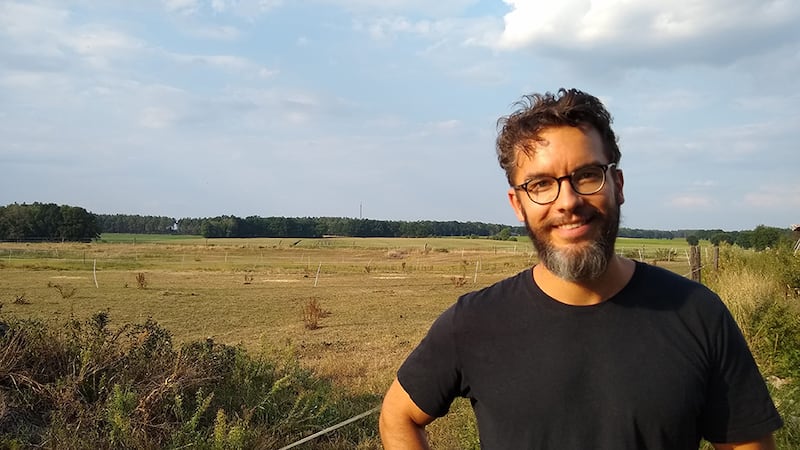Bring joy to thousands, or even millions, with the flick of a pen. Tyrone-born Clive McFarland got into it when he was inspired by rediscovering his favourite children’s books in the library as a student at Liverpool School of Art and Design.
I’m arty, and I love stories. Where do we begin?
McFarland started the moment he could hold a crayon. “I was doodling and colouring. I believe all children are innately creative and should be given every opportunity to express that.”
What age groups are we talking about?
Fans of graphic novels know many people stay lifelong fans of storytelling through pictures, but McFarland’s own work is generally aimed at children aged three to eight.
You were mentioning inspiration?
Children’s illustrators are often less well known than the writers, unless, like Richard Scarry and Beatrix Potter, they wrote as well. That’s a shame, but it’s still a rewarding career. McFarland’s childhood favourites included Eric Carle, famous for The Very Hungry Caterpillar, and Simms Taback.
RM Block
[ How to design with sound: Come in early and yell ‘Going loud!’Opens in new window ]
Let’s talk practicalities
Obviously there’s no end to children’s imaginations, but McFarland says that, with the age group he illustrates for, “typically, picture books are 32 pages, with word counts ranging from 300 to 800.” That said, there are always exceptions. The best stories are told through text and illustration. “Every word should count, and the illustrations should speak for themselves.”
What comes first, words or pictures?
“Each creative journey is different. For me it usually takes around six months to go from initial sketches to final art.” When McFarland is working on his own stories, it begins with his sketchbooks, but when illustrating someone else’s words they work independently, “guided by an editor and book designer”. It is also, he says, “a labour of love that requires time and energy”.
So can I earn a living at it?
“Like any creative career, there are peaks and valleys. It’s not a clear career path, and there will be setbacks,” says McFarland. It is a competitive area, so it can be hard to get published. But he points to a wealth of online resources, talks and workshops. Take a look at childrensbooksireland.ie. As well as information for young readers, it has links to resources for artists and writers, including funding bodies and publishers. Check out illustratorsireland.com and the UK-based childrensillustrators.com, too. “Publishers are always on the lookout for new talent,” McFarland says. “Persistence, a willingness to receive feedback, and confidence in your work are key.” Which all sounds like: prepare for rejection, but never give up. Rather like a storybook hero, in fact. When pitching to publishers, contact them first to ask what format they like to receive work in.
I’d prefer a sure-fire recipe for success
No such thing, I’m afraid, but a memorable character will help. You want them to stand out visually, but “it’s their emotional journey that truly resonates with readers, and the quiet, heartfelt moments and funny, relatable incidents that bring the character to life.” You want a good story – “an adventure with endless possibilities, that should always lead to a hopeful conclusion.”
Sounds like good advice for life
Maybe that’s the thing about children’s books – after all, every day’s a school day. McFarland says that peer networks help, so see what writers’ and artists’ groups there are in your area, and contact your local authority, bookshop or arts centre as a starting point. “Look beyond what’s currently popular on the bookshelves,” he says.
Clive McFarland’s Standing on One Leg Is Hard, written by Erika McGann, is published by O’Brien Press


















